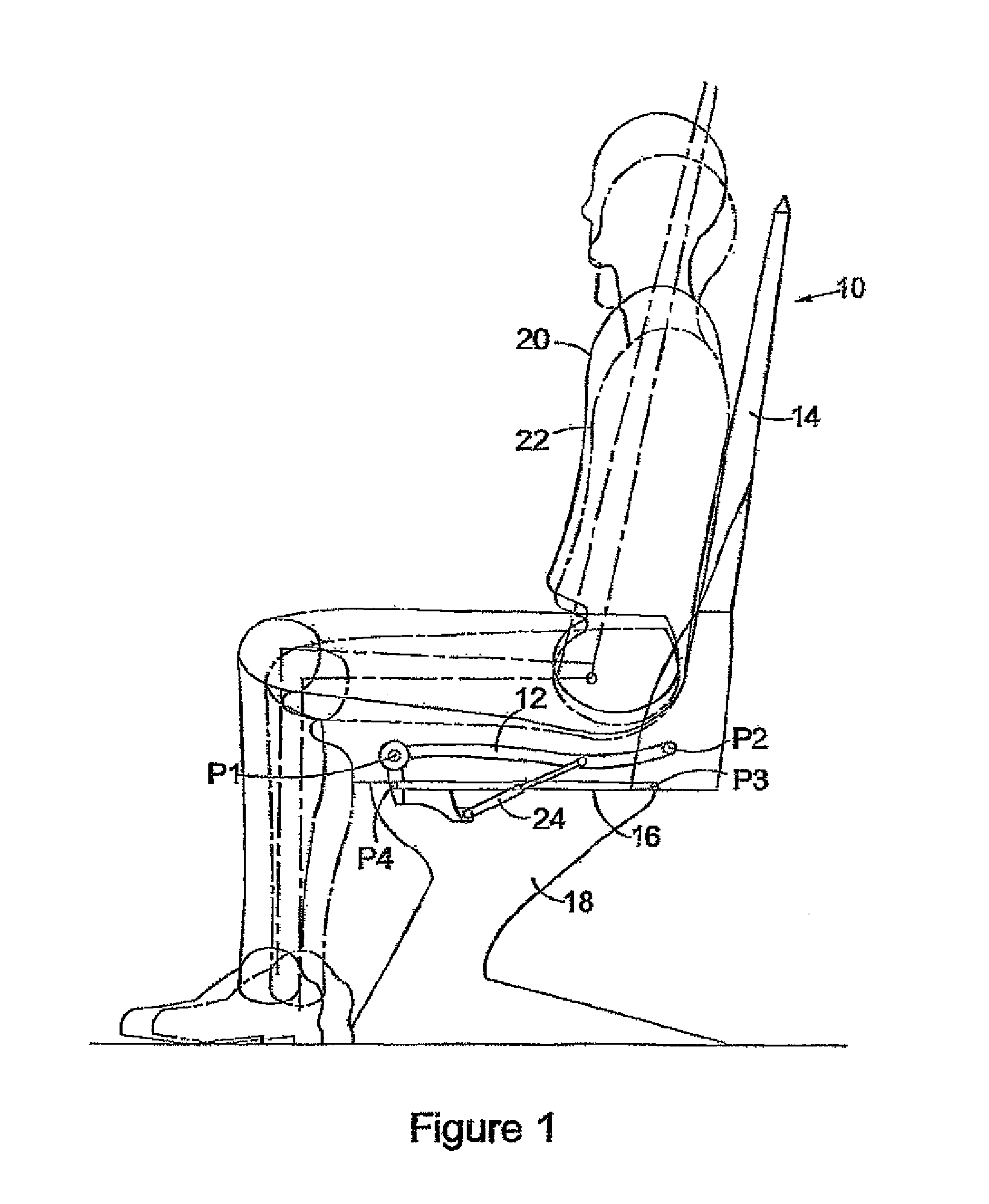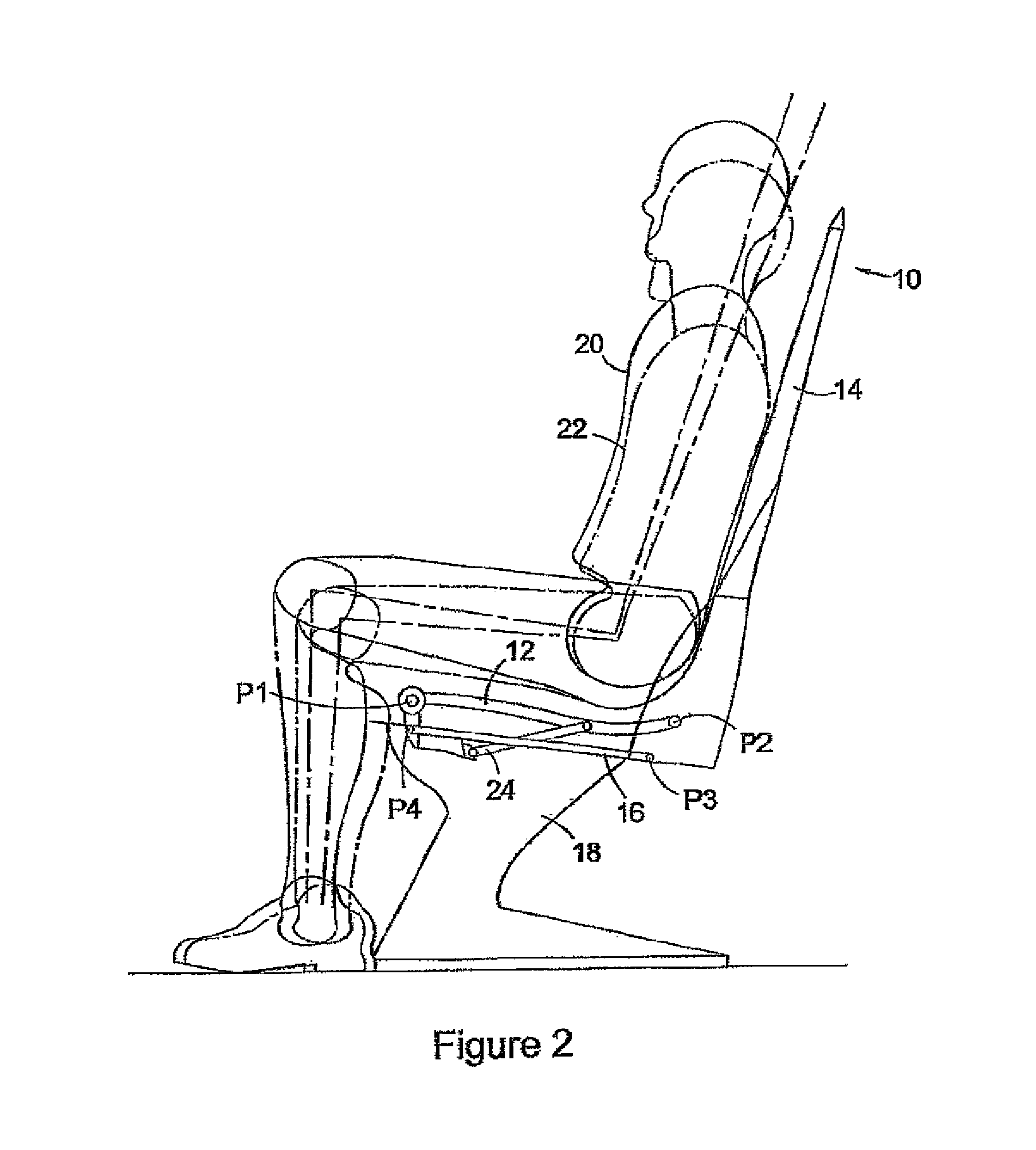Seat
a passenger seat and seat technology, applied in the field of seats, can solve the problems of putting significant pressure on the user's thighs, user discomfort during a journey, etc., and achieve the effects of reducing dead weight, reducing weight, and reducing weigh
- Summary
- Abstract
- Description
- Claims
- Application Information
AI Technical Summary
Benefits of technology
Problems solved by technology
Method used
Image
Examples
second major embodiment
of Kinematic System
[0102]FIGS. 30 to 33 illustrate the second major embodiment of kinematic system to achieve the desired adjustability of the seat between Delta, Delta 1 and Delta 2 positions FIG. 30 shows this embodiment in its rest, delta, position with the seat pan 12 substantially horizontal / level to the floor. Again, the seat pan 12 is pivoted to the seat structure 18 at pivot axis P1 along the front edge of the seat pan 12 and again the first pivot axis P1 is static in use of the seat, remaining at the same height and position relative to the floor level of the aircraft throughout the various repositioning modes of the seats.
[0103]As with the first preferred embodiment, the backrest 14 is pivotally coupled to the rear of the seat pan 12 by a second pivot axis P2 extending across the rear of the seat pan 12. The arrangement also has a third pivot axis P3 that couples a first structural member or con rod 16 to a lower edge of the backrest 14. The opposing end of the first struc...
PUM
 Login to View More
Login to View More Abstract
Description
Claims
Application Information
 Login to View More
Login to View More - R&D
- Intellectual Property
- Life Sciences
- Materials
- Tech Scout
- Unparalleled Data Quality
- Higher Quality Content
- 60% Fewer Hallucinations
Browse by: Latest US Patents, China's latest patents, Technical Efficacy Thesaurus, Application Domain, Technology Topic, Popular Technical Reports.
© 2025 PatSnap. All rights reserved.Legal|Privacy policy|Modern Slavery Act Transparency Statement|Sitemap|About US| Contact US: help@patsnap.com



